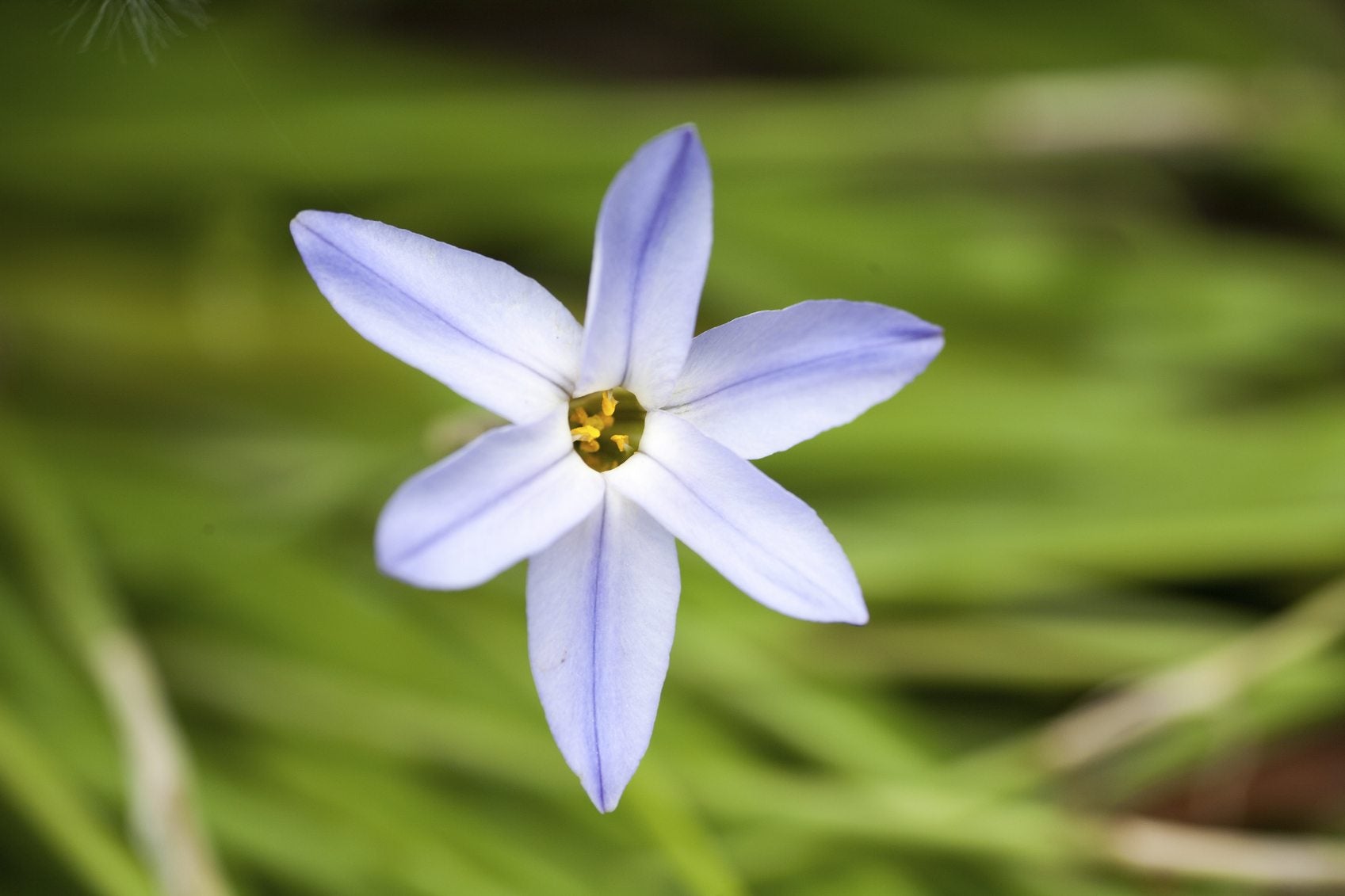Caring For Spring Starflower Plants: Learn How To Grow Ipheion Starflowers


Gardeners wait all winter for the first signs of spring in the form of early season flowers. These herald the approach of months of fun playing in the dirt and enjoying the fruits of that labor. Spring starflower plants, or Ipheion, are in the Amaryllis family of flowering bulbs. These charming little blooming plants hail from Argentina and Uruguay and form dense clumps of perennial flowers to chase the winter doldrums away.
About Spring Starflower Plants
The keys to spring flowers are good site location, soil drainage, and preliminary bulb care. Ipheion bulb care starts with proper installation and soil preparation. Knowing when to plant Ipheion starflower bulbs ensures healthy plants that won't get floppy and produce enticing spicy, scented flowers and attractive arching strappy foliage for years. Try growing spring starflower bulbs in rockeries, borders, containers, and even under trees and shrubs. Ipheion flowers spring from fall planted bulbs. They can get up to half a foot tall (15 cm.) with a similar spread. Each bulb will produce numerous flowering stems with slender, deeply green foliage that emits an odor like an onion when crushed. Blooms are fragrant and star shaped with six blue or white petals. The bulbs will continue to pump out flowers until the weather heats up, at which time the flowers stop but the foliage persists for several months. Over time, the patches of starflower will naturalize and can become invasive in some regions. Divide clumps every few years for more dense colonies.
When to Plant Ipheion Starflower Bulbs
Planting time is as important as knowing how to grow Ipheion starflowers. These bulbs need a chilling period to bloom. Spring's warmer temperatures force the flowers out of dormancy. This means fall is the ideal time to plant starflower bulbs. These plants are hardy in United States Department of Agriculture zones 5 and above. Choose a full sun to partial shade area of the garden and prepare the soil by tilling in plenty of organic matter to a depth of at least 6 inches (15 cm.). Soil should drain freely or bulbs can rot. Use a mulch over the planted area to prevent weeds and protect the bulbs from severe freezes. Ipheion starflowers make excellent cut flowers and will die back naturally in summer, leaving plenty of room for emerging summer perennials.
How to Grow Ipheion Starflowers
Starflowers look impressive when planted in a mass. Dig holes 2 inches (5 cm.) deep and the same distance apart. Orient the bulbs with the pointed side up and fill in around them with soil, tamping gently. You may opt to mix in bone meal or bulb fertilizer at planting, but these plants are low nutrient users and such practices aren't necessary for good blooms as long as the soil has been recently tilled and amended. Ipheion bulb care is minimal in spring. Once you see the first little green sprouts, pull away any mulch to help them emerge. Watch for slug and snail damage and deal with it with organic or purchased remedies. Squirrels are rarely a problem when growing spring starflower bulbs but if you have concerns, place a board over the area until late winter to protect them. Remove the board so new shoots can break free and access the sun. Divide your clumps every few years. If plants become invasive, remove seed heads and divide annually.
Gardening tips, videos, info and more delivered right to your inbox!
Sign up for the Gardening Know How newsletter today and receive a free copy of our e-book "How to Grow Delicious Tomatoes".

Bonnie Grant is a professional landscaper with a Certification in Urban Gardening. She has been gardening and writing for 15 years. A former professional chef, she has a passion for edible landscaping.
-
 Looking For Plants To Give You The Soft And Fuzzies? Try These 5 Fuzzy Leaf Plant Options
Looking For Plants To Give You The Soft And Fuzzies? Try These 5 Fuzzy Leaf Plant OptionsLovers of texture, drama, silver foliage and tactile plants will adore these special sensory garden additions. These fuzzy leaf plant options will leave you all aglow
By Susan Albert
-
 Get Ready For A Summer Of Hummers! Grow These Full Sun Hummingbird Plants and Flowers
Get Ready For A Summer Of Hummers! Grow These Full Sun Hummingbird Plants and FlowersIf you’re lucky enough to enjoy a sunny backyard, make sure you are maxing out on your pollinator opportunities and grow these full sun hummingbird plants and flowers
By Tonya Barnett
